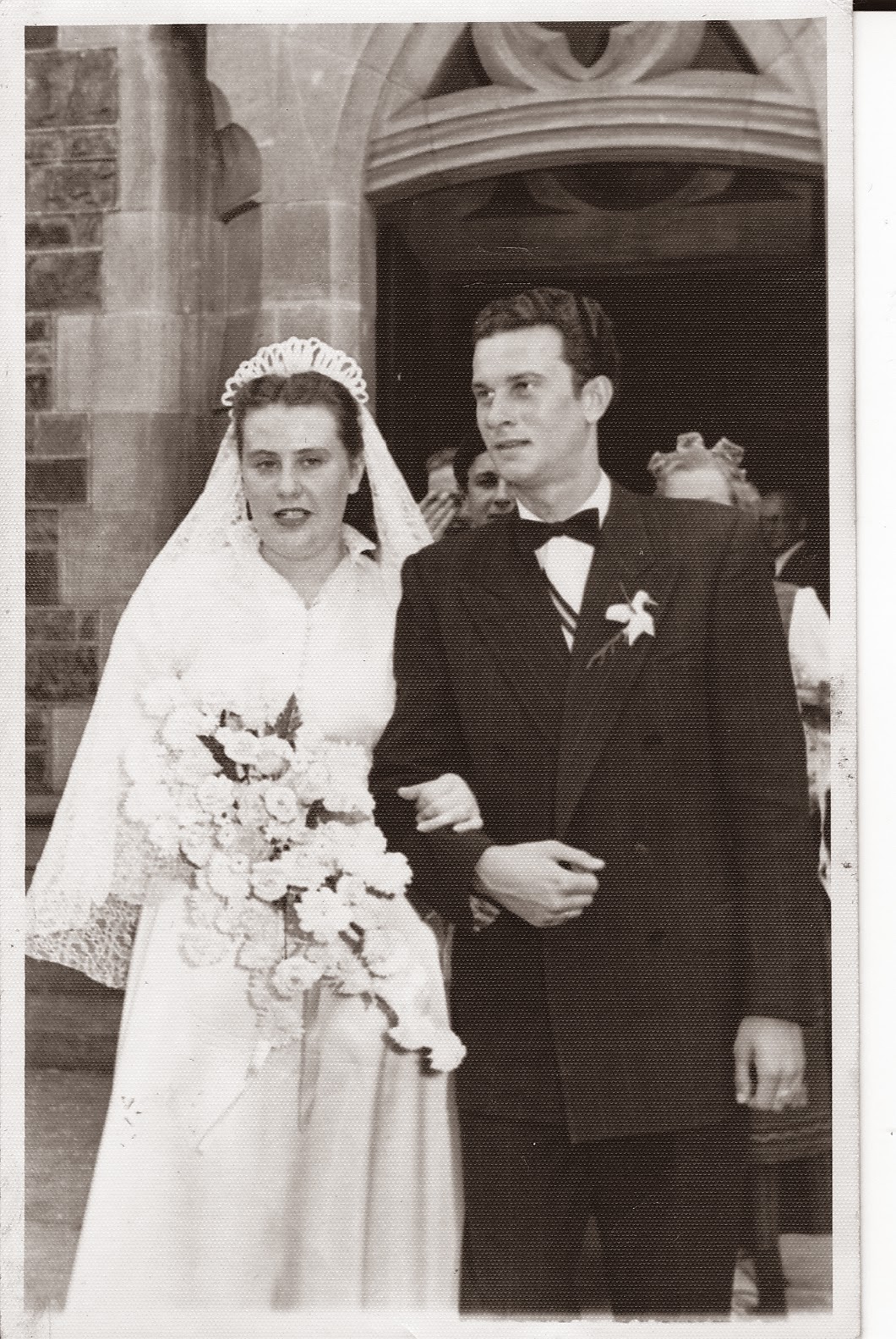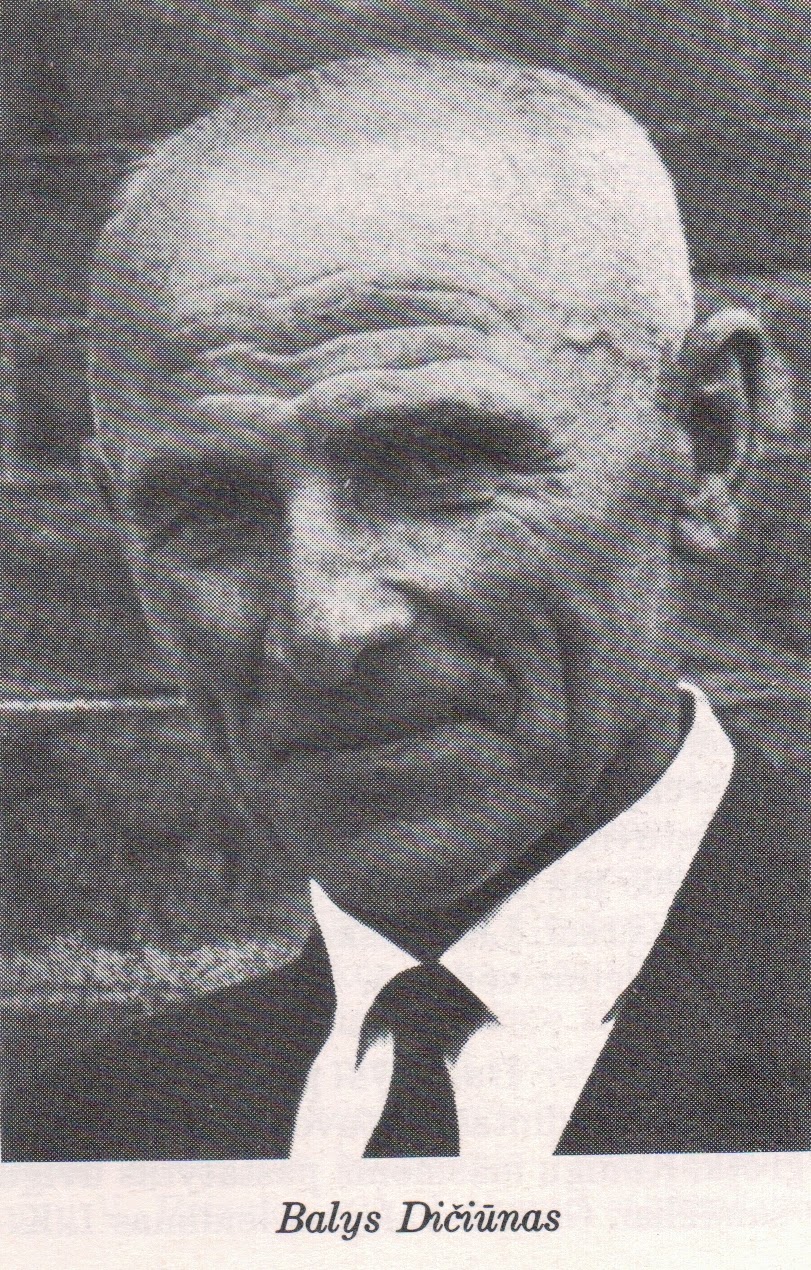 Alfredas Vitkunas was an active member of the South Australian Lithuanian community. These are his memories about his leaving Lithuania and arrival in Australia.
Alfredas Vitkunas was an active member of the South Australian Lithuanian community. These are his memories about his leaving Lithuania and arrival in Australia.
Thankyou to Jura Reilly, who gave permission for her father's memory to appear here.
“Faster! Faster! Can we go any faster?”. Our
two horses froth at the mouth, their breathing is as laboured as mine, as I sit
petrified with fear, alongside my family who are huddled together inside the
cart.
I’m 18 again and just a few hours earlier,
while I was working at the Kaunas post office, I took a peek at some very
official documents that had arrived. They are the dreaded deportation lists to
Siberia and our family’s name is on one of them. I run home as fast as I can and
blurt out this vital information to my family. Without delay, we throw as many belongings as
we can into a suitcase each.
It’s a hot day in June 1944 and now we’re
fleeing Lithuania by crossing into Germany via the townships of Kudirka and
Sirvinta. We stop to rest our two horses in Instermag. We can’t stop for long
and then we have to travel onwards, until we find ourselves in East Prussia,
where we’re taken in by a kind farmer, Herr Schmidt. We sleep in his barn but in the morning, we
all have lice. Everyone’s itching and cursing like mad. Dad, my brother George
and I decide to shave off all our hair. Mum
just washes hers as much as possible in the stream nearby. There’s no soap. We make do. On Schmidt’s farm there are two POWS who work
alongside of us doing farm work. We get paid with food and shelter in their
barn.
The grapevine provides us with valuable
information. From other refugees, we learn that the Russian army is creeping up
right behind us. Dad’s an ex Lithuanian army Lt Colonel and he knows that we
can’t stay here any longer. People
advise us to travel through West Prussia, then cross into Pomerania. As long as
we keep one step in front of the approaching Russian army, we will be
safe. When we get into Jastrow, the
officials take away our two horses, telling us they’ll pay us AFTER the war
ends. Now that’s a laugh, who knows
where we’ll be or whether any of us will still be alive by then? To compensate,
they give our family official papers to travel on by train, that is, if one
ever comes.
We sit there huddled on the platform,
exhausted and terrified. The Germans won’t let anyone on. But Dad, being an
experienced army man has a few tricks up his sleeve. At nightfall we sneak below the platform and
hide behind the wheels of the last train carriage. My parents are middle aged,
but the urge to survive at any cost, kicks in. When the guards go off for a
smoke, we take the chance and haul ourselves into the last carriage. By now the weather has changed and our feet
are frozen.
When we arrive in Schonedemunde, we manage
to get on another train to Greitz via Berlin. In Greitz we have relatives, my
aunt Mary and our cousin Algimantas. Unfortunately, Mary is injured during one
of the bombing raids on the city and dies of her injuries. We have to bury her
and leave Algimantas to fend for himself.
He reassures us that he’ll be fine and not to worry.
Next we arrive in Ingolstadt. There the
Germans try to haul us off to Dachau. We manage to escape this horrible fate, by
Dad telling them in his perfect German, that we’re here to stay with relatives.
As soon as it’s dark, we hurry out of there and find ourselves in a small
village, where an old lady called Eglė lets us stay on her farm as long as we
fix her windmill. Everywhere there’s utter chaos because we hear that the
Germans have lost the war. No one is in charge. People run to save themselves
and their families in any way possible. There’s a lot of looting and stealing.
At last the American army arrives. They
want to repatriate us back to Lithuania.
We aren’t that stupid, despite all their assurances, made via the Russians,
that we’d be welcome back home without any reprisals. We know our history. The
Russian invaders have always been well known for their brutality, right throughout
the ages. Dad knew he’d be executed and the rest of our family sent to Siberia.
He had to serve in the czar’s army in WWI, he knows firsthand, what the Russian
army and KGB are capable of.
We are lucky to find ourselves in a DP camp
in a pretty town called Eichstätt. That’s where I meet Valdas Adamkus
who would later become one of
Lithuania’s presidents and Gabrys Žemkalnis,
whose brother Vytautas Landsbergis would become the first president of a newly
independent Lithuania in 1991.
In Eichstätt, I was able to finish
high school and I was accepted into Eichstätt University to study
philosophy or medicine. I really wanted to study medicine, but at that time
DP’s like me, were being offered assisted passages to migrate to America and
Australia. My parents wanted to get away as far as possible as they’d
encountered the effects of Berlin Blockade and it looked like the Russian
tentacles were spreading across Europe.
I listened to Dad’s advice and so April
1948, when I was 21, along with other men, including Gabrys Žemkalnis and
Reverend Dauknys, we set sail for Australia on an American ship called the General Sturgis. It was a sad 22nd birthday on the
ship without my family. On 15th May 1948, we finally docked in Sydney. There, along with other men, I was taken to
the Bathurst Military Barracks which had been turned into a DP camp, housing
refugees like myself. It was freezing in June, and we only had a thin blanket
on our bunk beds. Later, I was transferred with other men to the Walter Morris
Timber Mills in Adelaide, South Australia. It was a back breaking work. Later I
was sent to Queensland to cut sugar cane and then came back to Adelaide to work
on a farm at Tailem Bend. Afterwards I started work as a ganger at the railway
yard at Mile End.
I started to worry about my parents and my
younger brother George who had been left behind in the DP Camp in Eichstätt.
Luckily, I was able to sponsor them out to Australia and had to be the guarantor
for their welfare. You see, in 1948, my
parents at 52 were considered too old to immigrate to Australia which needed
young people to work on the railways, the Snowy Mountains Scheme and other post
war projects, and at 16, my brother George was considered too young. In 1949,
the rest of my family were allowed to join me, but they were sent to the
Bonegilla Migrant Camp in Albury, NSW at first. Later, they were transferred to Adelaide where
I found them jobs on the railways. In 1950, I met my future wife Liuda Giniotytė
and her family who were from Palanga. The same year my brother met Nijolė Plokštytė,
but my parents would not give George their consent for him to marry Nijolė till
he was 21! They had 2 sons; Victor and Andrew.
 |
| Alfredas and Liuda on the wedding day |
In 1951, Liuda and I got married and
afterwards, we all pooled our money to buy a house at 96 Childers St in North
Adelaide. Our daughter Jura was born on 1952. In 1954, my parents and my family
bought a house at 4 Henley St Torrensville. Unfortunately during that same
year, I had a horrific motorbike accident on the way to work as a ganger with
the railways. The surgeon did not set my
broken leg very well. I was out of work for a year. Later, I was transferred to work in the
Accounts office at Mile End, as I couldn’t work as ganger after my accident. We
were lucky that my parents Ona and Marijonas Vitkunas were able to help us out.
Our son Rimas was born in 1958. Four years later, in 1962 we were able to buy a
house at 24 Bagot Ave, Mile End and that’s where our youngest son Robert was born.
Post script: Alfredas Vitkunas was one of
the original dancers in the Adelaide
Lithuanian dancing group, served on many
committees within the Adelaide Lithuanian community, acted in the acting group,
sang in the choir and for many years, was in charge of the Adelaide Lithuanian
Museum at Lithuanian House in Norwood. In 2004, Alfredas was awarded a Padėkos
Raštas (Certificate of Thanks) for his museum work, by the Lithuanian Ministry
of Culture.

 The family moved into their
new home in April 1956. Although
plans were drawn up in the 1950s for extensions, including another bedroom,
they were never implemented. The large backyard had lots of fruit trees,
a big lawn area, lots of flowers, grapevines, strawberries and a small
vegetable patch. Inside, the house had a feature wall with a
traditional Lithuanian motif (stylised flowers) painted on the wall.
The family moved into their
new home in April 1956. Although
plans were drawn up in the 1950s for extensions, including another bedroom,
they were never implemented. The large backyard had lots of fruit trees,
a big lawn area, lots of flowers, grapevines, strawberries and a small
vegetable patch. Inside, the house had a feature wall with a
traditional Lithuanian motif (stylised flowers) painted on the wall. 
































